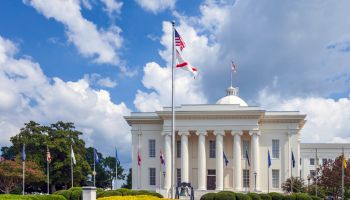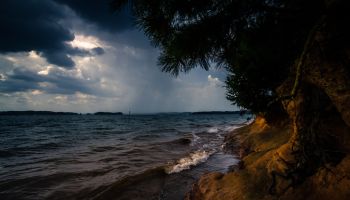TERESOPOLIS, Brazil — A new and ominous rain began falling again Friday in mountain towns where mudslides and flooding killed at least 509 people, hindering rescuers’ efforts to reach survivors even as relatives hauled the dead down the hills to freshly dug graves.
The known death toll rose overnight in three cities north of Rio, and officials feared that number could still rise, though they would not venture a guess of how many remain missing. Local reports put it in the hundreds.
It’s the worst natural disaster to hit Latin America’s biggest nation since flooding and slides in 1967 killed 785 people, according to the Brussels-based International Disaster Database, which has tracked deadly natural events in Brazil since 1900.
There were hundreds of rescuers in the area of Teresopolis and officials said the problem was getting them to remote areas isolated after roads were washed out. Despite the new rains, no more mudslides have been reported.
For those who did survive remains the grim task of burying loved ones.
As night fell Thursday on Teresopolis, barefoot volunteers dragged a generator and stadium lights into a cemetery, where nearly 200 freshly dug graves lay open like wounds in the red clay soil, waiting for the dead.
Funerals already had been held all day: a sister laying her brother to rest, a man burying his 1-year-old niece in a small white casket, a mother who cried her 9-year-old son’s name repeatedly as he was lowered into the earth.
Small, handmade white crosses identified only by numbers – the details would have to come later – dotted the desolate, sodden hilltop.
Dozens more funerals will come Friday and 300 more graves will be dug Saturday, said Vitor da Costa Soares, a city worker in charge of the cemetery.
“We’ll make room. We have to. We’ll stay up here until 10 p.m., midnight if we can, and we’ll be here at 6 a.m. tomorrow,” he said.
Heavy rains unleashed the mudslides before dawn Wednesday, burying people as they slept in this area about 40 miles (65 kilometers) north of Rio.
Survivors started digging for friends and relatives with their bare hands, kitchen utensils, whatever they could find as they waited for help in remote neighborhoods perched precariously on steep, washed-out hillsides.
In the remote Campo Grande neighborhood of Teresopolis, now accessible only by a perilous five-mile (eight-kilometer) hike through mud-slicked jungle, family members pulled the lifeless bodies of loved ones from the muck. They carefully laid the corpses on dry ground, covering them with blankets.
A young boy cried out as his father’s body was found: “I want to see my dad! I want to see my dad!”
Flooding and mudslides are common in Brazil when the summer rains come, but this week’s slides were among the worst in recent memory. The disasters punish the poor, who often live in rickety shacks perched perilously on steep hillsides with little or no foundations. But even the rich did not escape the damage in Teresopolis, where large homes were washed away.
“I have friends still lost in all of this mud,” said Carlos Eurico, a resident of Campo Grande, as he motioned to a sea of destruction behind him. “It’s all gone. It’s all over now. We’re putting ourselves in the hands of God.”
In the same area, Nilson Martins, 35, carefully held the only thing pulled out alive since dawn: a pet rabbit that had somehow remained pristinely white despite the mud.
“We’re just digging around, there is no way of knowing where to look,” he said. “There are three more bodies under the rubble over there. One seems to be a girl, no more than 16, dead, buried under that mud.”
The hundreds of homes washed away in the neighborhood were turned inside out, their plumbing and electrical wires exposed. Children’s clothes littered the earth, cars were tossed upside down into thickets. An eerie quiet prevailed as people searched for life. The sounds of digging, with sticks and hands, were occasionally punctuated by shouts as another corpse was located.
Conceicao Salomao, a doctor coordinating relief efforts at a makeshift refuge inside a gymnasium in central Teresopolis, said about 750 people were staying there Thursday and about 1,000 people had sought treatment in the past day. One danger she worried about was leptospirosis, a waterborne bacterial disease.
“The hospitals around here are overflowing. The army and navy are setting up field hospitals to help,” she said.
Rio state’s Civil Defense department said on its website that 226 people were killed in Teresopolis, 226 in nearby Nova Friburgo, 41 in neighboring Petropolis and another 16 in the town of Sumidouro. It said about 14,000 people had been driven from their homes.
An additional 37 people had died in floods and mudslides since Christmas in other parts of southeastern Brazil – 16 in Minas Gerais state north of Rio and 21 in Sao Paulo state.
Just a few rescuers managed to hike to Caleme on Thursday and they had only shovels and machetes – not the heavier equipment needed to hunt for survivors. Residents said they had no food, water or medication, and many made the long walk for help to the center of Teresopolis.
Morgues in the cities were full and bodies covered in blankets were laid in streets.
Officials said the area hit by slides had seen 10 inches (26 centimeters) of rain in less than 24 hours. More rain is forecast through the weekend.















